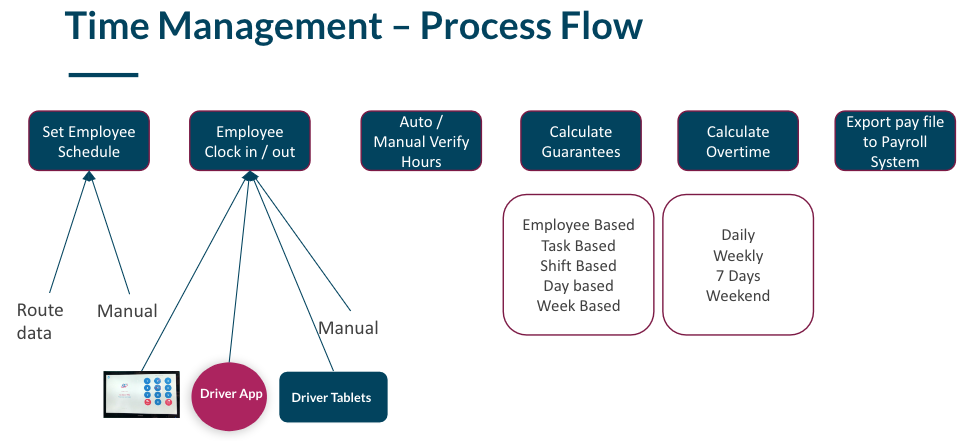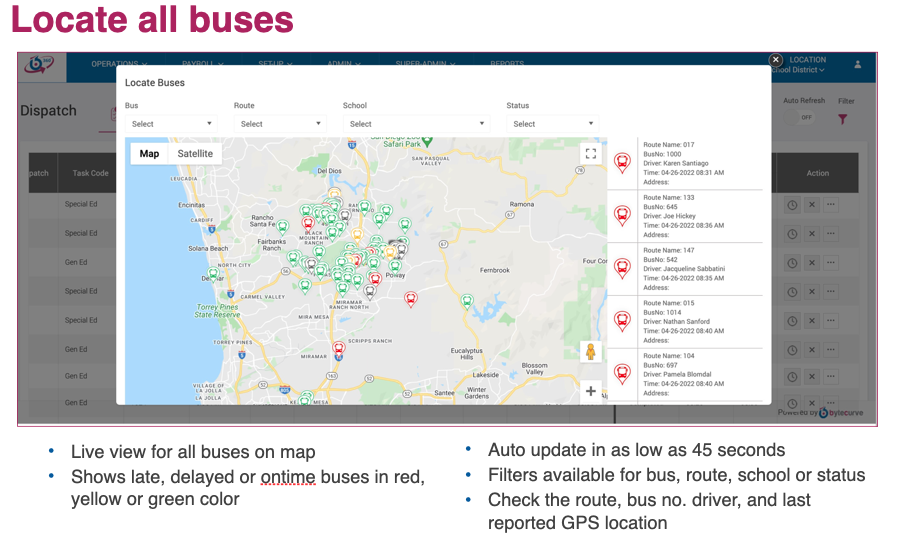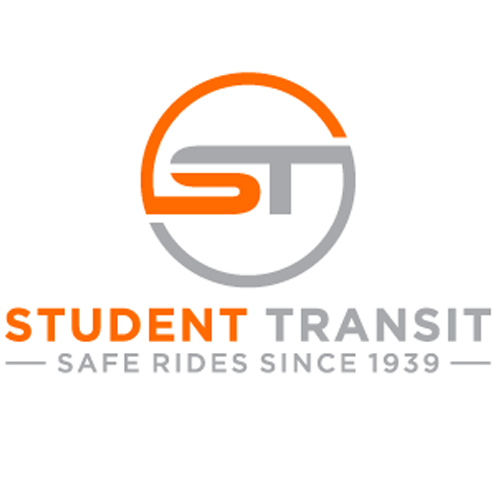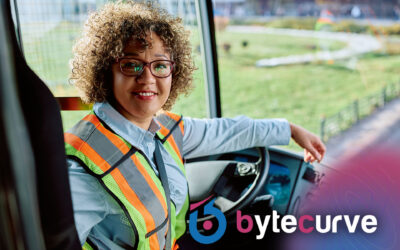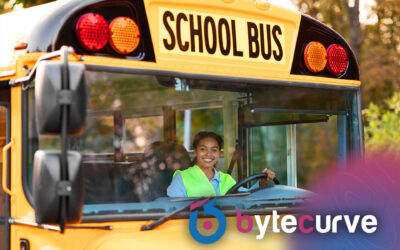BYTECURVE RESOURCES
School Bus Stop Arm Technology
Technology is now helping school districts and local law enforcement officials across the country capture evidence of such passing infractions.
“Bytecurve makes our payroll process seamless with reduced time and paperwork,”
-Jennifer Idlette, Transportation Director, Indian River School District
Buses Served
Districts and Contractors
Payroll Processed
School Bus Stop Arm Technology
It was just past 6:30 a.m. one day in October 2024 when Alexandra Ramos, a high school junior in Naples, Fla., found herself lying on the road.
Footage from a stop arm camera on her school bus showed that, as she was crossing the street in front of her bus, Ramos was struck by a car driven by a motorist who ignored the school bus’s extended stop sign and flashing lights.
“I didn’t know what was going on,” Alexandra, 16, told CNN in December.
“I remembered an ambulance coming, people surrounding me, and asking me if I was OK.”
The high school junior suffered a cut to the head, a black eye, and a bruised body, CNN reported.
“Video from the school bus showed the bus with its yellow lights on, almost at a stop, when the driver ‘drove around the school bus in an aggressive manner and began to accelerate,’ according to the crash report from the sheriff’s office,” CNN reported. “Alexandra was walking in front of the bus—from a median on the driver’s side to the bus’s door side—when she was struck,” the report says.
“The driver, who was cited on suspicion of reckless driving with personal injury, is being sued by the family.”
Enhancing Student Safety with IoT Innovations
Technology is now helping school districts and local law enforcement officials across the country capture evidence of such passing infractions.
“To prevent these types of incidents at or near school bus stops, lawmakers in states across the country have passed legislation that allowed school districts to introduce stop-arm cameras on school buses,” CNN said.
School bus stop arm cameras are supplied by vendors and fitted to the side of a school bus, where they are intended to capture video of vehicles illegally passing the bus when its stop arm—the retractable stop sign that bus drivers activate when picking up or dropping off schoolchildren—is deployed.
The camera’s operator then sends any incriminating footage to a local law enforcement body, which reviews the footage and decides whether to issue a citation to the allegedly offending driver.
School bus drivers—and government officials—recognize the danger
School bus drivers certainly notice it when a motorist illegally passes a bus—despite the flashing lights and extended stop sign—while loading and unloading vulnerable schoolchildren.
Now, the nation’s highest levels of government are taking a closer look at the dangerous and alarmingly commonplace practice.
Recently, the National Highway Transportation Safety Administration (NHTSA) released a major report on the widely varying laws and regulations in local jurisdictions across the country that deal with school bus passing.
The 190-page report, which was mandated by Congress, was released in late 2024 and follows a highly publicized survey by the National Association of State Directors of Pupil Transportation Services (NASDPTS) that estimated over 43.5 million illegal school bus passes occurred during the 2022-2023 school year.
“NHTSA stated that recent changes in various state laws about whether motorists should stop for a school bus on the other side of a divided highway can cause issues,” reported stnonline.com, the digital arm of Student Transportation News magazine.
” Unfortunately, the lack of clarity and consistency in the presentation of these laws, particularly the provisions related to divided highways and the need to stop for a school bus on school property, can be confusing,” the report stated.
“NHTSA said it found that all U.S. jurisdictions ‘require a motorist to stop while overtaking from behind a stopped school bus regardless of the road type (undivided or divided).’
The differing requirements were in cases where a motorist is approaching the stopped school bus from the front, with 42 states requiring drivers to also stop if approaching from the front on an undivided highway.
Some states require a stop only if the undivided highway has a certain number of lanes, which continues to add to the lack of clarity and cohesiveness between states.”
Stop-arm camera technology, which is becoming more and more common, still faces barriers to adoption in many parts of the country.
“Only 24 states or territories currently allow the use of cameras to enforce illegal passing, and of those 24 there are varying criteria about whether the driver’s face must be identifiable in the violation footage,” stnonline.com reported.
According to the report, different laws in a state might theoretically affect how well stop-arm cameras work. However, the study did not find any proof that laws other than the Vehicle Traffic Law (VTL) that directly affect passing stopped school buses were affecting how well stop-arm cameras worked. “As the installation of stop-arm camera systems increases across the country, this situation could change.”
School bus drivers are all too aware of the issue.
“Some days, I’ve had three or four violators in one day,” Ryan Rose, a school bus driver for Montgomery County Public Schools in Virginia, told WSLS-TV (NBC) in Roanoke, Va. “I don’t understand the point of ‘I can’t see a big yellow school bus with red flashing lights.’ I actually had one child whose bookbag got hit by the mirror of a car.”
“Montgomery County Public Schools (MCPS) and the local Sheriff’s Office are targeting drivers who illegally drive by when the school bus stop signs are out,” reported WDBJ-TV (CBS) in Roanoke. “They will have help from new cameras installed by an AI software company called BusPatrol. The cameras will be on all sides of the bus.”
Virginia-based BusPatrol says it has installed cameras on more than 30,000 buses in 18 states, according to the CNN report.
Steve Randazzo, the chief growth officer of BusPatrol, told CNN that distracted drivers often drive recklessly around school buses. “We partner with communities to equip school buses with, in some ways, lifesaving technology.”
Dr. Bernard Bragen, the MCPS superintendent, says the software picks it up when a driver passes a school bus without stopping.
The recording will include their license plate information. We send that to the sheriff’s office, they vet it, and then they’ll be issued a summons for violating the law and passing the bus while it was stopped,” Dr. Bragen said, according to WDBJ.
Drivers caught passing without stopping face fines of $250 per infraction.
Using Technology to Enhance Student Safety
“Every day, more than 25 million children ride a bus to school, and these children are often at risk of being injured or killed by drivers who fail to stop while students load and unload the bus,” stnonline.com opined in a 2023 story. “Today’s drivers are more distracted than ever, be it talking, texting, eating, running late, and many other reasons.”
Ensuring student safety during school bus transportation is—or should be—a top priority for school districts, law enforcement, and policymakers.
Among the most significant advancements in school bus safety is stop arm technology, a system designed to prevent illegal passing of school buses while children are boarding or disembarking.
This technology, combined with IoT innovations, has the potential to dramatically reduce accidents, improve enforcement, and create safer environments for school children across the United States.
The persistent issue of motorists ignoring school bus stop signals has led to the development of stop arm technology.
Many school buses now feature high-tech stop arms equipped with cameras and IoT-connected sensors that detect and document violations.
Law enforcement can use these systems to issue citations by capturing images and video of offending vehicles.
As the demand for student safety grows, IoT-driven solutions are playing an increasingly important role in enhancing bus stop security, preventing accidents, and ensuring that violators are held accountable.
“Parents should never have to worry about their children going to and from school, and I hope all drivers will pay attention more closely than ever before,” says Melissa Wandall, President of the National Coalition for Safer Roads (NCSR). “Unfortunately, I have had a firsthand experience with a driver disregarding a red light at an intersection, and it has impacted my life every day ever since.
“I advocate that schools leverage the latest technology to hold drivers accountable and keep kids safe.”
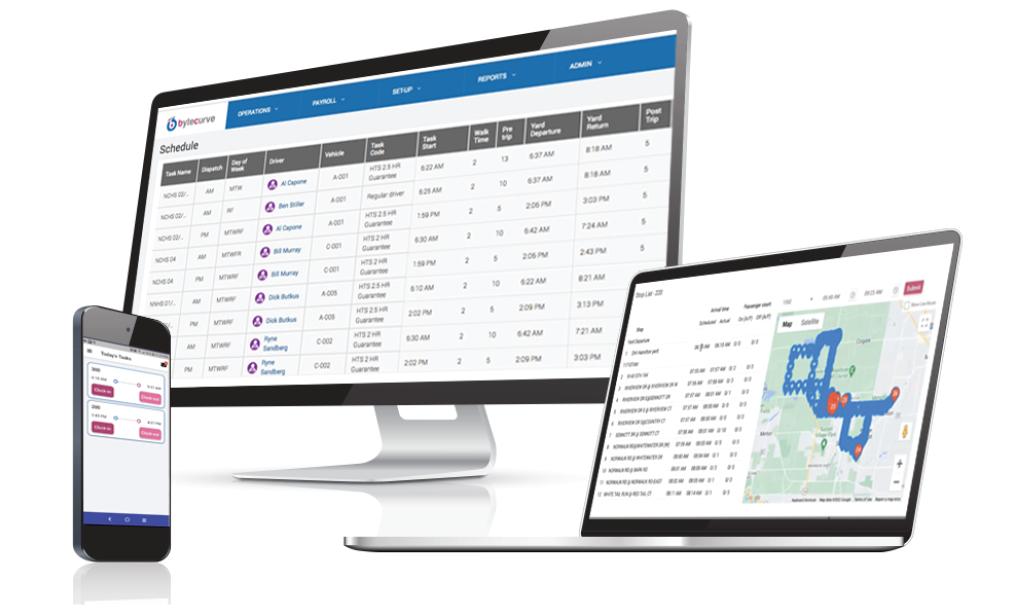
The Benefits of School Bus Stop Arm Technology
The primary benefit of stop-arm technology is its ability to deter drivers from illegally passing school buses.
Studies have shown that thousands of violations occur daily, endangering students as they cross roads to enter or exit their buses.
By deploying stop-arm cameras and automated enforcement systems, school districts can significantly reduce these violations and improve compliance with traffic laws.
Another key advantage is the ability to document and report violations with irrefutable evidence.
Traditional enforcement methods rely on bus drivers or witnesses to record details such as license plate numbers, which can be difficult in real time.
Stop-arm cameras eliminate this uncertainty by automatically capturing high-resolution images and video footage of offenders, ensuring that law enforcement has the necessary proof to issue fines and take legal action when necessary.
IoT integration further enhances the effectiveness of stop arm technology.
By connecting these systems to cloud-based platforms, transportation officials can analyze data trends, monitor high-risk areas, and deploy additional safety measures where needed.
These insights allow school districts to refine their safety protocols and collaborate with law enforcement to improve compliance rates.
Additionally, local authorities can expedite enforcement efforts with real-time alerts, increasing the likelihood of catching and holding offenders accountable.
Another important benefit is the deterrent effect of visible enforcement technology. The presence of surveillance systems on school buses deters reckless driving behaviors.
Studies have found that when stop-arm cameras are installed, the number of violations often drops significantly, leading to safer school zones and reduced risks for students.
Concerns and Detractors of Stop Arm Technology
Despite its many benefits, stop arm technology is not without its detractors. Some critics argue that automated enforcement systems raise concerns about privacy and data security.
Capturing images and video of passing vehicles means collecting sensitive information, and there are debates about how this data should be stored, accessed, and shared.
School districts must work closely with policymakers to establish clear guidelines for data protection and ensure compliance with privacy regulations.
Another concern is the potential for false positives or incorrect citations.
While stop-arm cameras are designed to capture clear evidence, there have been cases where innocent drivers have been wrongly accused.
Factors such as poor weather conditions, obstructed views, or technical malfunctions can sometimes lead to misidentifications.
Addressing these issues requires regular system maintenance, accurate data analysis, and a fair appeals process for those who believe they were wrongly cited.
The cost of implementing stop arm technology is another challenge for some school districts. Equipping an entire fleet of school buses with IoT-enabled cameras and enforcement systems requires a significant financial investment.
While grants and funding programs are available in some states, not all districts have the resources to adopt these technologies on a large scale.
Policymakers must explore funding solutions to ensure that all students, regardless of location, can benefit from enhanced safety measures.
There are also arguments that enforcement-focused approaches alone may not be sufficient to change driver behavior in the long term.
Some advocates suggest that increased public education campaigns, stricter penalties, and enhanced driver training should accompany technological solutions to ensure a holistic approach to school bus safety.
How IoT is Revolutionizing School Bus Safety
Beyond stop-arm technology, IoT-driven innovations like those from Bytecurve are transforming school bus safety in multiple ways.
The integration of smart sensors, GPS tracking, and connected camera systems is creating a safer, more efficient school transportation environment.
One of the most impactful IoT applications is GPS tracking, which allows school districts to monitor bus locations in real time.
Parents and administrators can receive live updates on arrival times, route deviations, and unexpected delays, improving transparency and reducing the likelihood of students being left waiting at bus stops for extended periods.
IoT-based fleet management systems enhance student safety by guaranteeing the proper maintenance of buses.
Sensors installed on critical vehicle components, such as brakes and engines, can detect potential mechanical failures before they become serious issues.
Predictive maintenance powered by IoT reduces breakdown risks, keeps buses in optimal condition, and ensures that students are transported safely each day.
Another promising development is student tracking technology, which uses RFID and biometric systems to log when students board and exit buses. This ensures that no child is left behind or dropped off at the wrong location
Parents can receive notifications when their child gets on or off the bus, providing added peace of mind and improving accountability in school transportation operations.
Smart traffic signal integration is another IoT-based advancement that enhances school bus safety.
Connected school buses can communicate with traffic lights to extend green signals when buses are approaching, reducing the likelihood of sudden stops and improving overall traffic flow.
This feature reduces the risk of drivers speeding up or illegally passing a bus.
To date, Bytecurve 360 is the only technology solution provider capable of integrating routing and GPS tracking software into a seamless interface that enhances their overall performance.
The software trusted by dozens of school districts as well as many private contractors delivers many benefits, including:
- Better driver communications so that employees can check in/out remotely, view their schedules and respond in real time to route changes
- Easier payroll management so that fleet managers no longer have to manually calculate employee guarantees/contracts and overtime and the ability to consolidate payroll for drivers, aides, subs, mechanics, and support staff.
- The system enhances the management of daily operations by assigning and reassigning drivers and vehicles through real-time integration with GPS and routing systems. This allows all routes and runs to be easily reconfigured when a bus breaks down or a driver can’t come in.
By automating processes, improving communication, and leveraging advanced technologies, districts can create a seamless and transparent transportation system that benefits students, parents, and administrators alike.
The Future of School Bus Stop Arm and IoT Safety Solutions
As technology continues to evolve, the future of school bus safety looks increasingly promising.
Advances in artificial intelligence and machine learning will likely enhance stop arm enforcement by improving the accuracy of vehicle detection and reducing the chances of false citations.
AI-powered analytics will also help identify high-risk areas where violations are more frequent, allowing school districts to implement targeted safety measures.
We also expect legislation to play a crucial role in expanding the adoption of stop-arm technology.
More states are introducing laws that mandate stop-arm cameras on school buses, recognizing their effectiveness in reducing violations and protecting students.
As awareness of the dangers associated with illegal passing grows, support for stronger enforcement measures is likely to increase.
Autonomous school buses, while still in the experimental phase, could represent a future step in school transportation safety.
Equipped with IoT sensors, AI navigation systems, and advanced safety protocols, autonomous school buses could further reduce the risk of human error and improve overall efficiency.
While widespread adoption may still be years away, ongoing research and pilot programs are paving the way for these innovations.
In conclusion, stop-arm technology and IoT-driven solutions are revolutionizing school bus safety, helping to prevent accidents and helping to protect students.
Although we must address challenges such as privacy concerns, cost, and enforcement limitations, the benefits of these technologies far outweigh the drawbacks.
By combining technological advancements with policy support, public education, and responsible implementation, school districts can create a safer and more reliable transportation system for students across the United States.
As IoT technology continues to evolve, its role in enhancing school bus safety will only grow, shaping the future of student transportation for years to come.
Integrated Student Transportation Software
About Bytecurve
Founded in 2018 by GP Singh after many years on the frontline of student transportation operations with one of the country’s largest private student transportation providers, Bytecruve is designed as the 360 view of operations.
By blending routing and GPS fleet tracking data, and adding a payroll capability as well as mobile app for two-ways communications between dispatch and drivers, Bytecurve 360 has created a new category for student transportation excellence: the dispatch command center.
“We believe many school bus operators still don’t appreciate all the potential improvments they can deliver by taking two powerful yet independent systems and merging them into a new layer of visibility and action,” Singh said. “We’re integrated with all the major providers of routing systems and GPS fleet tracking so virtually any school district with both systems can take advantage of our transformative technology.”
Trusted by dozens of districts across North America, more than 40,000 school bus rely on Bytecurve technology to improve their efficiency and safety.
“I know from first hand experience what school bus fleet leaders need to perform at their best, and we work tirelessly on our product and with our customers to deliver this experience so they can know they are investing in the safest and most efficient fleet.”




